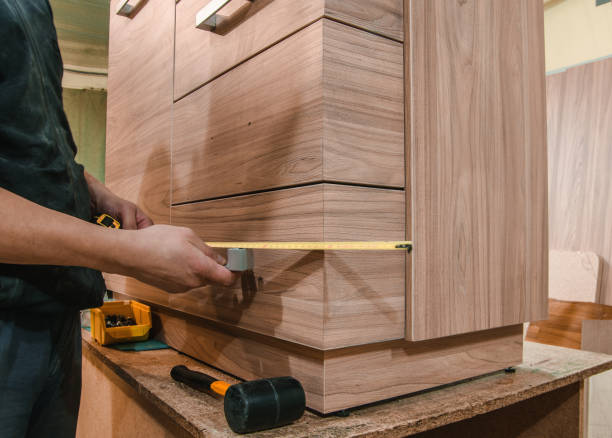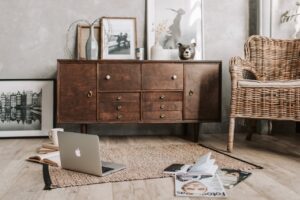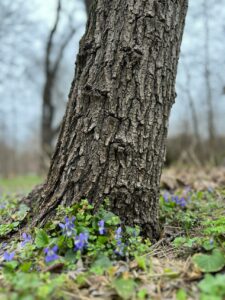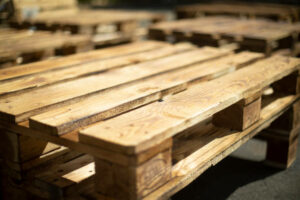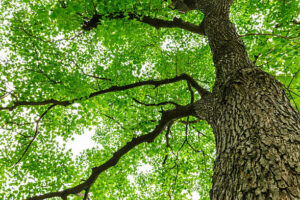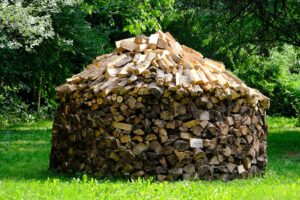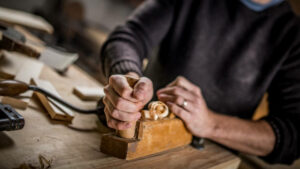Hardwoods are the go-to choice for crafting stunning furniture and cabinets – they’re tough, stable, and boast natural colors and grain patterns that make them a favorite among woodworkers. But let’s face it: the price tag for popular hardwoods like ash, walnut, mahogany, and oak can be a bit steep, often exceeding $20 per foot. Making it difficult for individuals living within their means to afford them.
In this guide, we will be exploring budget-friendly hardwood alternatives that won’t burn a hole in your pocket. We will be uncovering the cheapest hardwoods that offer both affordability and the enduring beauty that hardwoods are known for.
What is Hardwood Lumber?
Hardwood lumber refers to wood that comes from deciduous trees, which are trees that shed their leaves annually. Unlike softwood, which comes from coniferous or evergreen trees, hardwood is derived from a more diverse range of tree species. What sets hardwood lumber apart is its dense and durable nature, making it highly valued in woodworking and construction.
The term “hardwood lumber” specifically refers to wood that has been milled and processed into usable boards or planks, ready for use in various applications within the woodworking industry.
These hardwoods encompass a variety of tree types, including white oak, maple, walnut, mahogany, and cherry, each offering unique characteristics in terms of color, grain pattern, and hardness. Hardwood lumber is a preferred material for crafting high-quality furniture, cabinets, flooring, and other wood-based products due to its strength, stability, and aesthetic appeal.
Top 6 Cheapest Hardwoods
Wondering about the cheapest type of wood when purchasing hardwood lumber for your furniture making? Here is a guide on their perks, costs, and disadvantages.
Poplar wood
Poplar wood is the least expensive hardwood (slightly harder than pine), the cheapest hardwood lumber, typically costing between $2 and $5 per board foot. Poplar trees have a distinct appearance because of their characteristic colors of grey, white, creamy yellow, or green, occasionally stained with purple. But after the wood is finished, the colours will gradually go away, leaving the wood with a more uniform, brown tone.
Poplar has a fine grain, which is often referred to as a smooth grain. This word describes a natural pattern of tiny, closely spaced lines in the wood. Fine-grained wood has fewer knots, as well. Fine-grained wood gets extremely smooth once it is sanded. Paint is known to adhere nicely to poplar wood. You might choose to go for poplar wood if your project calls for painting.
Even better, poplar wood may be stained with a gel stain to resemble walnut or cherry. Poplar wood doesn’t require painting or staining; on its own, it appears fine! Poplar wood is typically only utilized as a supplementary wood for larger projects due to its susceptibility to denting. But you can use a moist towel and a household iron to remedy denting. This wood is resistant to deterioration despite its susceptibility to denting. After being primed, painted, and sanded, it ought to withstand typical wear and tear for many years.
Ash wood
Ashwood is an impressively straight-grained hardwood with a fairly consistent and uniform texture throughout. Ash naturally occurs in a variety of colors, including light cream, yellow, warm tan, and even light brown.
Ash is an excellent idea for custom projects that need to look like they were produced from highly expensive wood since it has a characteristic cathedral pattern in the wood grain. It’s usually available for a reasonable fee, if not free at all.
Ashwood is frequently cheap hardwood lumber utilized in a wide range of products, such as baseball bats, kitchen cabinets, and other do-it-yourself hardwood furniture projects. It typically costs between $3 – $5 per board wood.
Maple wood
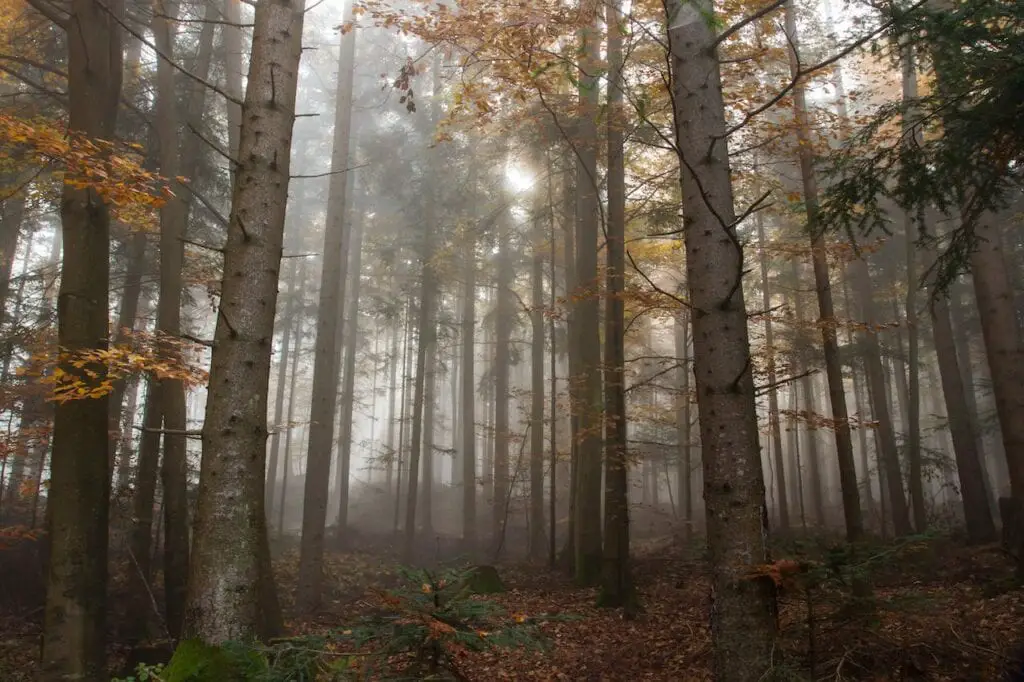
For a few reasons, maple wood is one of the less expensive woods that is sometimes disregarded. Although there are several varieties of maple wood, soft maple is often less expensive than hard maple. Either way, these are longer-lasting, tougher woods suitable for a wide range of tasks. It costs $3 – $7 per board foot.
Furniture made of maple wood is quite popular because of the patterns and vivid colors that maple wood can hold. One of the most often used wood varieties from deciduous trees is maple, which is used to make tables and bookcases.
When working with maple, keep in mind that some varieties are poisonous if swallowed or inhaled. Make sure you wear gloves for safety and use a dust mask or respirator when working with maple wood on your next project.
Alder
Alder typically costs between $6 and $8 per board foot. When freshly cut, alder wood, a relative of birch, has an almost white hue. The wood will become yellow or reddish when it comes into contact with air. Due to its well-known “rustic” appearance, alder wood is a popular choice for furniture, cabinets, and statement pieces like entry doors. One of the greatest woods for finishing is alder due to its consistent color.
Alder wood is difficult to dye, though. The tiny pore structure unevenly absorbs the stain. This can accentuate the rustic, naturally aged appearance of the wood. However, you will need to use a wood conditioner to achieve an even stain. Alder wood can be stained to resemble walnut or cherry wood once it has been properly conditioned.
Alder wood is easily sawed and sanded, and it can be screwed without requiring pre-drilling or split when fastened. Alder wood is frequently used to make furniture, crown moldings, cabinets, and paneling because of its lovely color. The one drawback to alder wood is that compared to other hardwoods like maple; it is far more prone to scratches and dents.
Alder wood was originally known as the “poor man’s cherry” because it was so much less expensive. Though more costly currently, it’s still among the less expensive hardwoods.
White oak
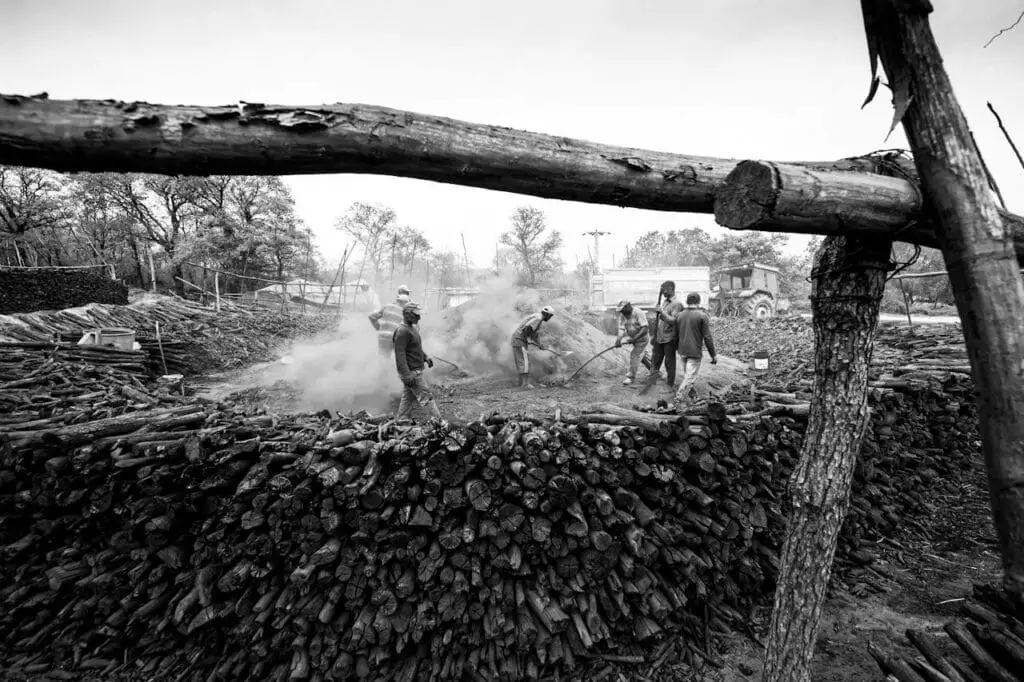
The hardest, heaviest wood on this list is white oak, which also happens to be extraordinarily durable. It is, therefore, a well-liked hardwood for furniture and flooring. This solid wood also, which is used to build boats, can withstand normal home wear and tear with ease. Because white oak doesn’t rot, it’s a great material for outdoor projects because it can tolerate both extremes of temperature.
Due to its strength, durability, and beauty, white oak is a desirable wood. Richly toned, the wood has distinct silver grains and ranges in color from light tan to pale yellow-brown. It is also inherently warm. This wood is an extremely appealing hardwood since a wood finish may easily bring out its inherent colors.
White oak, despite being one of the priciest hardwoods on this list, is regarded best wood and by many as the best of the less expensive varieties. White oak is equally expensive as alder wood, costing between $6 and $8 per board foot on average.
Beech
Beech, a common wood used in European furniture and occasionally flecked with pink or brown, has a very characteristic pale cream color. It has a smooth texture, straight patterns, and a fine-grained appearance. Hard maple wood and beechwood are comparable in terms of hardness and density. But compared to hard maple, it’s a lot simpler to deal with.
This wood is generally quite easy to shape and cut, and it is easy to work with both hands and power equipment. It works well for glue and nailing, and sanding to a smooth finish is a breeze because of its fine pores. Because of its strength and resistance to wear, beechwood is ideal for furniture and cabinetry.
But stain does not come off of this wood very well. Using clear finishes is advised when working with beech wood. While beechwood is undoubtedly one of the priciest flooring materials, its average cost per board foot is about the same as that of alder and white oak hardwoods.
In conclusion, the pursuit of the most economical hardwoods for your furniture-making endeavors goes beyond mere cost-cutting – it’s a strategic move that can enhance the overall quality of your woodworking journey. By opting for budget-friendly hardwoods, you not only manage your project expenses judiciously but also create a financial leeway. This allows you to redirect those saved funds towards acquiring high-quality tools, the backbone of any well-equipped workshop.
